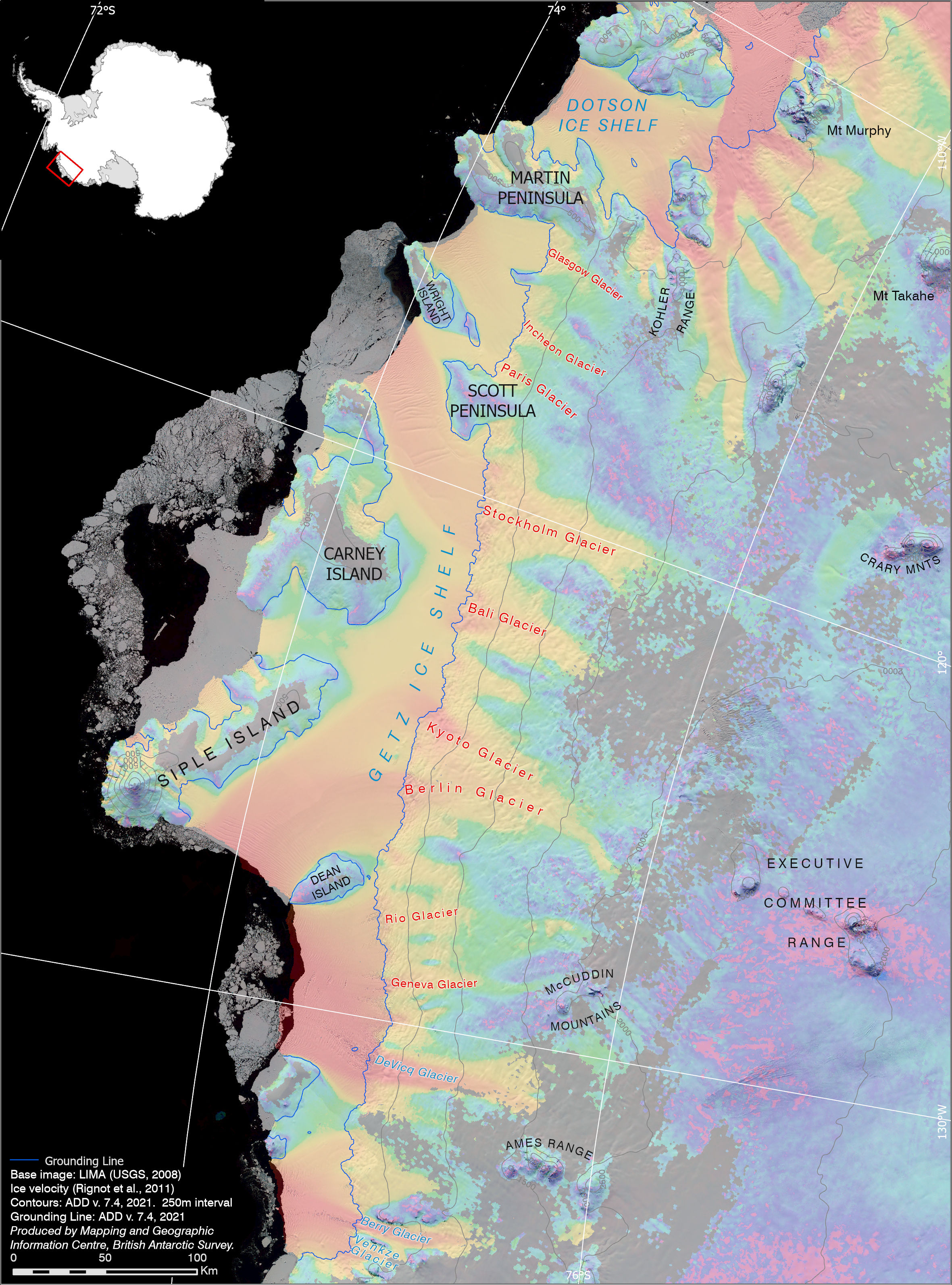- Chain of fast-flowing glaciers to be named after important climate meetings, including Glasgow, to mark COP26
- Paris, Kyoto, Berlin, Stockholm, Rio, Bali, Geneva and Incheon will all have glaciers named after them, in a region that is changing as a result of global warming
- University of Leeds proposed names for nine glaciers flowing into the Getz ice shelf
An enormous body of fast-moving ice in West Antarctica has been formally named the ‘Glasgow Glacier’ to mark the city hosting the COP26 climate change conference this year, the Foreign Commonwealth & Development Office (FCDO) has announced.
The Glasgow Glacier is one of nine areas of ‘fast flowing’ ice – being melted by warming seawater - to be named after locations of major climate treaties, conferences and reports. Glasgow, Paris, Kyoto, Berlin, Stockholm, Rio, Bali, Geneva and Incheon will all have glaciers in the Getz basin named after them.
The naming suggestions were made by University of Leeds scientists Heather Selley and Dr Anna Hogg. The proposal was submitted by the FCDO on behalf of the UK. It was supported by the UK Antarctic Place-names Committee and will be added to the international Composite Gazetteer for Antarctica, for use on maps, charts and future publications.

| Place name | |
|---|---|
| Geneva Glacier | The Geneva Glacier flows at the western end of the Getz Ice Shelf and was named after the world’s first climate conference in 1979. |
| Rio Glacier | The Rio Glacier lies further east and commemorates the first Earth Summit in 1992 where the United Nations Framework Convention on Climate Change (UNFCCC) was opened for signatures along with its sisters the Rio convention, the UN convention on biological diversity and the UN convention to combat desertification. |
| Berlin Glacier | The Berlin Glacier flows further east and is named after the first Conference of Parties (COP) in 1995 which assessed the progress of dealing with climate change. It marked the uniting of the world to tackle climate change and the agreement on a mandate for future negotiations. |
| Kyoto Glacier | The Kyoto Glacier commemorates the formal adoption of the Kyoto Protocol at COP3 in 1997, which legally bound developed countries to emission reduction targets. |
| Bali Glacier | The Bali Glacier marks the release of the Intergovernmental Panel on Climate Change forth assessment report (AR4) in 2007. At the thirteenth Conference of Parties (COP13) parties agreed on the Bali road map, which charted the way towards post-2012 outcome with a working group on long-term cooperative action under the convention. |
| Stockholm Glacier | The Stockholm Glacier honours the Intergovernmental Panel on Climate Change fifth assessment report (AR5) approval session in 2014. This report represents the biggest ever coming together of scientists at the time. |
| Paris Glacier | The Paris Glacier memorialises the agreement of a legally binding treaty in 2015 which aimed to limit global warming to well below 2°C, preferably below 1.5°C, compared to pre-industrial levels. It was adopted by 196 parties that together represented at least 55 % of the global greenhouse gas emissions. |
| Incheon Glacier | The Incheon Glacier marks the meeting of the IPCC to consider the special report of global warming of 1.5°C in 2015. This marked the first time the three different IPCC working groups worked together to produce a report in an interdisciplinary manner. |
| Glasgow Glacier | The Glasgow Glacier flows at the very east end of the Getz basin and is named after Glasgow which will host the 26th UN Climate Change Conference of Parties (COP26) later this year. It marks a key moment in human history for the response to climate change especially given the impact of the COVID-19 pandemic. |